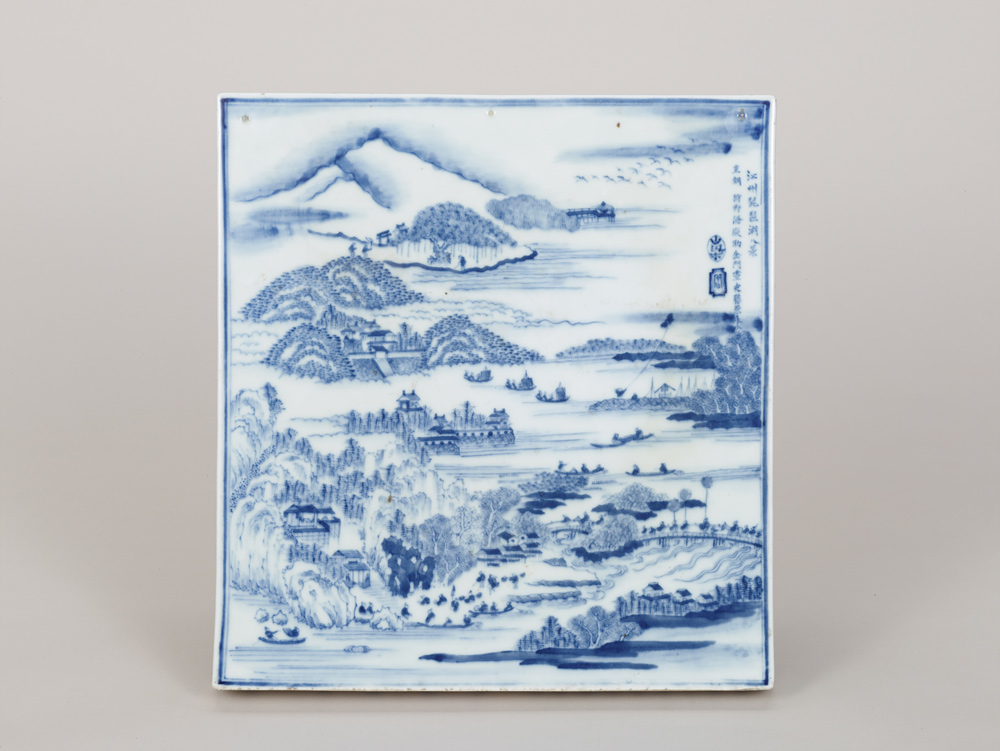Japanese Tastes in Chinese Ceramics: Tea Utensils, Kaiseki Dishes, and More is co-organized by the Asian Art Museum and the Kyoto National Museum. Support is provided by The Henri & Tomoye Takahashi Charitable Foundation and an anonymous donor.

Please note: Special public hours – 10 AM to 5 PM – on Thursday, May 9
Exquisite Chinese and Chinese-influenced ceramics from the Kyoto National Museum demonstrate the importance of Chinese art to Japanese tea culture.
Japanese Tastes in Chinese Ceramics: Tea Utensils, Kaiseki Dishes, and More illuminates the artistic and cultural exchange between China and Japan by exploring the role of Chinese ceramics in Japanese tea culture. After Chinese tea customs were introduced in Japan around the 12th century, the social ritual of tea spread among eminent monks at Zen temples, samurai families, and other members of the upper class. For these early practitioners of chado (‘the Way of Tea,’ also known as chanoyu, ‘hot water for tea’), the display and use of Chinese artworks and ceramics were an essential part of tea gatherings; by using precious and exquisite Chinese objects (karamono) to decorate their tearoom and serve tea, a host could demonstrate their refined taste and prestige. Even as the Japanese tea practice evolved in the 16th century toward a style honoring the simplicity of humbler, Japanese-crafted objects, Chinese ceramics continued to hold a central place in Japan’s tea culture.
Japanese Tastes in Chinese Ceramics comprises both Chinese ceramics and Japanese-made objects created in Chinese styles. The 19th century Japanese vase with arabesques shown above at left, produced in the garden of the Ki Domain of the Tokugawa shogun family, was crafted in imitation of wares like the Ming dynasty (1368–1644) Chinese jar with a lotus pond and waterfowl design seen at right; both are included in the exhibition. In contrast, a 19th century kettle trivet made at Jingdezhen kiln in China was ordered from Japan, where Kano Eigaku (Japanese, 1790–1867), a famous Kano school painter, created its underdrawings.
The objects in Japanese Tastes in Chinese Ceramics were selected from the collection of the Kyoto National Museum by curators from both the Asian Art Museum and the Kyoto National Museum. This scholarly exhibition is the first project born from a 2021 partnership agreement between the two museums, aimed at promoting research, facilitating academic collaboration, and strengthening the friendship between the United States and Japan. The exhibition represents a cross-cultural exchange of respect, inspiration, and influence between China, Japan, and the United States that extends through history to the present day.

Top images:
Vase with arabesques, approx. 1800–1868. Japan. Stoneware with raised slip and overglaze enamel. Lent by Kyoto National Museum. Photograph © Kyoto National Museum.
Jar with lotus pond and waterfowl design, approx. 1400–1600. China. Stoneware with raised slip and overglaze enamel. Lent by Kyoto National Museum. Photograph © Kyoto National Museum.
Japanese Tastes in Chinese Ceramics: Tea Utensils, Kaiseki Dishes, and More is co-organized by the Asian Art Museum and the Kyoto National Museum. Support is provided by The Henri & Tomoye Takahashi Charitable Foundation and an anonymous donor.
